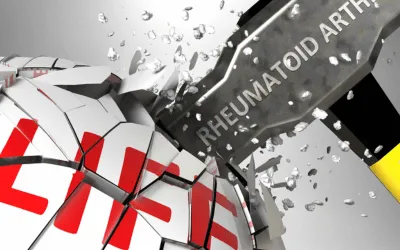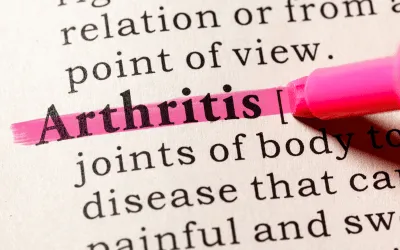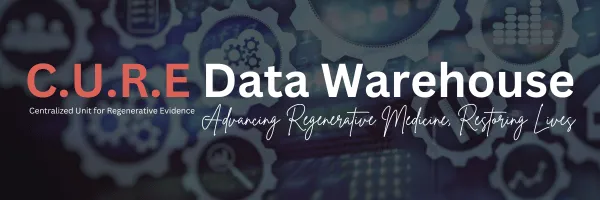About Arthritis
As the nation’s #1 cause of disability, arthritis affects nearly 60 million adults and 300,000 children. Over 100 types of arthritis and related conditions damage the joints and often other organs.
How can we assist you?
Helpful Tools for You

Early Diagnosis and Prevention Strategies: Your Complete Guide to Staying Ahead of Health Problems
The Power of Catching Problems Early
Imagine if you could spot a health problem before it becomes serious – before you even feel sick. That's exactly what early diagnosis and prevention strategies are all about. It's like having a smoke detector in your home: you want to know about the fire before it spreads, not after your house is already burning.
Here's an encouraging fact: The World Health Organization estimates that 30-50% of all cancer cases could be prevented through early detection and intervention. That's not just cancer – similar success rates apply to heart disease, diabetes, and many other conditions that affect millions of older adults.
If you're reading this, you're already taking an important step toward better health. Let's explore how modern medicine – including some exciting new technologies – can help you stay healthier longer.
What Does "Early Diagnosis" Really Mean?
Think of early diagnosis as detective work for your body. It's about finding clues that something might be wrong before you feel sick. There are actually several levels of prevention that work together:
The Four Levels of Prevention
1. Primary Prevention - Stopping problems before they start
Getting vaccinated
Eating healthy foods
Exercising regularly
Not smoking
2. Secondary Prevention - Catching problems early when they're easier to treat
Mammograms for breast cancer
Colonoscopies for colon cancer
Blood pressure checks for heart disease
Bone density scans for osteoporosis
3. Tertiary Prevention - Managing existing conditions to prevent complications
Taking medication for diabetes to prevent organ damage
Cardiac rehabilitation after a heart attack
Physical therapy after a stroke
4. Quaternary Prevention - Protecting you from unnecessary medical tests and treatments
Avoiding tests that might do more harm than good
Preventing overdiagnosis of conditions that wouldn't cause problems
The Game-Changing Technologies of 2024-2025
The world of early diagnosis is moving incredibly fast. Here are some of the most exciting developments that are already helping people stay healthier:
Artificial Intelligence: Your New Health Detective
AI isn't science fiction anymore – it's helping doctors right now. AI-enabled testing and screening devices are helping disease management become more proactive across specialties to detect Alzheimer's disease, heart disease, depression, cancer, liver disease and more.
What AI can do for you:
Retinal scanning: Companies like RetiSpec are using quick standard eye scans to detect cardiovascular, kidney and eye diseases as well as signs of brain problems
Symptom tracking: Apps like Ubie allow you to describe symptoms on your smartphone and get connected to local doctors
Predictive modeling: MIT and Massachusetts General Hospital have developed deep learning models that can predict breast cancer occurrence up to five years in the future
Advanced Imaging: Seeing the Invisible
New imaging technologies are like having super-powered X-ray vision. Advanced imaging technologies, such as MRI, PET, and CT scans, are critical for early diagnosis of health issues – potentially even before symptoms develop.
Real-world example: Researchers at the University of Oxford have built an AI algorithm that can predict heart attacks up to ten years in advance by detecting inflammation and other risk factors not visible through conventional methods.
Personalized Medicine: Treatment Just for You
Personalized preventive care involves tailoring disease prevention approaches to an individual's specific risks and characteristics, including age, family history, lifestyle, medical history, and genetic predispositions.
This means your prevention plan will be unique to you – not a one-size-fits-all approach.
Why Early Detection Matters More Than Ever
The Survival Statistics That Will Motivate You
Let's talk numbers, because they're truly encouraging:
Cancer survival rates when caught early:
Breast cancer: 83-96% of patients diagnosed at early stage survive at least 5 years, compared to only 10-39% when diagnosed at advanced stage
Lung cancer: Stage 1 diagnosis results in 57% of people surviving 5+ years, but stage 4 diagnosis drops this to only 3%
Heart disease prevention:
Early detection of risk factors like high blood pressure, high cholesterol, and diabetes allows for interventions that can prevent heart attacks and strokes
The cost per hospitalization for sudden cardiac arrest was $24,500 in 2018, not including complications
The Economic Benefits Are Real
The Institute of Medicine estimates that the US spends an extra $55 billion annually due to missed disease prevention opportunities. By catching problems early, you're not just saving your health – you're saving money too.
Your Practical Action Plan: What You Can Do Today
Step 1: Know Your Risk Factors
Create a simple health inventory:
Family history: What diseases run in your family?
Personal history: What health problems have you had?
Lifestyle factors: Do you smoke, drink, exercise, eat well?
Age-related risks: What should you be watching for at your age?
Step 2: Schedule Age-Appropriate Screenings
Here's a straightforward guide for adults 50 and older:
Annual Screenings:
Blood pressure check
Cholesterol test
Diabetes screening (blood sugar)
Eye exam
Hearing test
Every 2 Years:
Mammogram (women)
Bone density scan (women, men if risk factors)
Every 10 Years (or as recommended):
Colonoscopy
Tetanus/diphtheria booster
Every 3 Years:
Cervical cancer screening (women under 65)
Step 3: Embrace Technology Tools
Wearable devices can monitor:
Heart rate and rhythm
Blood pressure
Sleep patterns
Activity levels
Blood oxygen levels
Smartphone apps can help with:
Symptom tracking
Medication reminders
Health record organization
Appointment scheduling
Step 4: Build Your Prevention Team
Your core team should include:
Primary care physician (your quarterback)
Specialists as needed (cardiologist, oncologist, etc.)
Pharmacist (for medication management)
Dentist (oral health affects overall health)
Eye doctor
Physical therapist or fitness trainer
The "Silent Diseases" You Should Know About
Silent conditions are so-called because they may not have symptoms or their symptoms may not be apparent until the disease is advanced. These are the sneaky ones that early detection can catch:
High Blood Pressure (The Silent Killer)
Often no symptoms until serious damage occurs
Regular checks can prevent heart attack, stroke, kidney disease
Easy to treat once detected
Diabetes (The Gradual Destroyer)
Can damage organs slowly without obvious symptoms
Simple blood tests can detect early stages
Lifestyle changes can prevent or delay progression
Osteoporosis (The Bone Thief)
Weakens bones gradually without pain
Bone density scans can detect early changes
Treatment can prevent fractures
High Cholesterol (The Artery Clogger)
No symptoms until arteries are significantly blocked
Blood tests reveal problems before heart attacks
Diet and medication can reverse damage
Breaking Down the Barriers
Common Reasons People Skip Prevention
"I feel fine" - Many serious diseases have no early symptoms "I'm too old" - It's never too late to benefit from prevention "It's too expensive" - Prevention is much cheaper than treatment "I'm scared of what they might find" - Early detection means better outcomes "I don't have time" - Prevention saves time by avoiding illness
How to Overcome These Barriers
Schedule everything at once - Make it convenient
Bring a friend or family member - Make it social
Focus on the benefits - Better health, more time with family
Start small - One screening at a time
Use reminders - Set phone alerts for appointments
The Future of Early Detection
What's Coming Next
The field is moving incredibly fast. The global AI in healthcare market is expected to grow from $10.4 billion in 2021 to $120.2 billion by 2028.
Emerging technologies include:
Liquid biopsies: Blood tests that can detect cancer cells
Wearable continuous monitoring: Devices that track health 24/7
Home diagnostic kits: Professional-grade tests you can do at home
Telemedicine integration: Virtual consultations with specialists
Predictive analytics: AI that can forecast health problems years in advance
Real-Time Health Monitoring
In the future, AI could enable real-time monitoring of health data on a global scale, providing early warnings of potential health issues before they reach crisis levels.
Your Next Steps: Making Prevention Personal
This Week:
Schedule one overdue screening
Download a health tracking app
Review your family health history
Check your medicine cabinet for expired medications
This Month:
Schedule annual physical exam
Research your health insurance benefits
Create a list of your current medications
Find a fitness activity you enjoy
This Year:
Complete all age-appropriate screenings
Establish relationships with specialists if needed
Create a health emergency plan
Review and update your health goals
The Bottom Line: Prevention is the Best Medicine
By focusing resources on screenings, vaccinations, and health counseling, both individuals and healthcare systems can proactively identify and address health risks, preventing the progression of conditions to more severe states.
Remember these key truths:
Early detection dramatically improves outcomes for most diseases
Modern technology makes prevention more effective than ever
Prevention is much less expensive than treatment
It's never too late to start taking better care of your health
Small actions today can prevent major problems tomorrow
Your Health is Your Most Valuable Asset
You can't buy good health, but you can invest in it. Every screening you get, every healthy choice you make, every symptom you don't ignore – these are investments in your future.
Eastern medicine has always emphasized the superiority of prevention over treatment, but it requires the discipline to focus not on the immediate present, but on the benefits we can gain decades into the future.
The best time to start taking care of your health was 20 years ago. The second best time is today.
One Final Thought
Early diagnosis and prevention aren't about becoming paranoid about your health – they're about taking control of it. When you know what to look for and when to look for it, you're not at the mercy of chance. You're actively participating in your own wellness.
The technologies and strategies we've discussed aren't just for the wealthy or the worried. They're tools that can help anyone live a longer, healthier, more active life. And isn't that what we all want?
If you're ready to take the next step in your health journey, consider exploring advanced diagnostic options and personalized prevention strategies. The future of healthcare is here, and it's more hopeful than ever.

Effects of Arthritis

Cause of Disability
In the United States, 23% of all adults, or more than 54 million people, have arthritis. It is a leading cause of work disability, with annual costs for medical care and lost earnings of $303.5 billion.

Workforce Effects
Sixty percent of US adults with arthritis are of working age (18 to 64 years). Arthritis can limit the type of work they are able to do or keep them from working at all.

Global Impact
In fact, 8 million working-age adults report that their ability to work is limited because of their arthritis. For example, they may have a hard time climbing stairs or walking from a parking deck to their workplace.
Promoting Interventions That Reduce Arthritis Pain
American Arthritis Foundation recognizes several proven approaches to reduce arthritis symptoms:
Be active. Physical activity—such as walking, bicycling, and swimming—decreases arthritis pain and improves function, mood, and quality of life. Adults with arthritis should move more and sit less throughout the day. Getting at least 150 minutes of moderate-intensity physical activity each week is recommended.
Protect your joints. People can help prevent osteoarthritis by avoiding activities that are more likely to cause joint injuries.
Talk with a doctor. Recommendations from health care providers can motivate people to be physically active and join a self-management education program. Should your arthritis be interfering with your activities of daily living you may be a candidate to receive many new treatments, and learn how to reverse the arthritis condition.


